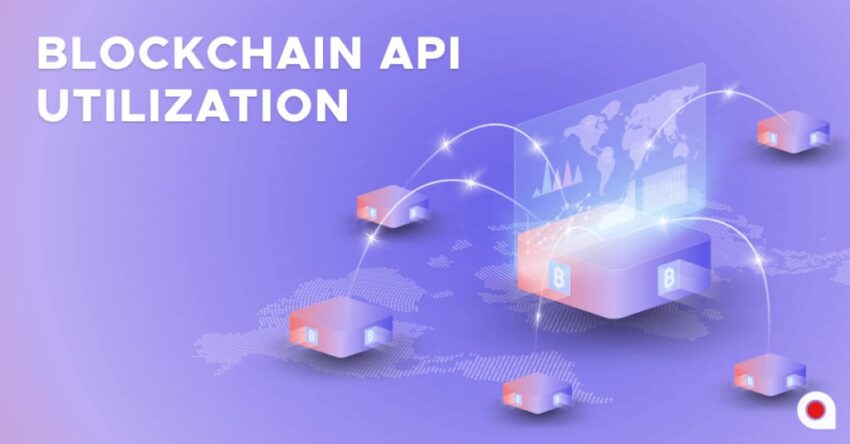Introduction
Blockchain technology has revolutionized the way we envision data storage, security, and transparency in various industries. At the heart of this technological marvel are blockchain nodes, and the APIs (Application Programming Interfaces) that interact with them. In this comprehensive blog post, we’ll delve into the fascinating world of blockchain nodes API, exploring what they are, how they work, their significance in the blockchain ecosystem, and their diverse use cases.
Understanding Blockchain Nodes and APIs
Blockchain Nodes
In the context of blockchain technology, a “node” is a computer or server that participates in the network by running the blockchain’s software protocol. These nodes collectively form the backbone of the blockchain network, and they serve several essential functions:
-
Validation: Nodes validate transactions by ensuring they adhere to the network’s consensus rules and cryptographic principles.
-
Consensus: Nodes participate in the consensus mechanism, working together to agree on the state of the blockchain, confirm transactions, and add new blocks to the chain.
-
Data Storage: Nodes store a copy of the entire blockchain ledger, ensuring redundancy and decentralization.
-
Security: By validating transactions and blocks, nodes contribute to the network’s security and resistance to fraudulent activity.
Blockchain Node APIs
A blockchain node API is an interface that allows developers to interact programmatically with a blockchain node. These APIs expose a set of endpoints and methods that enable developers to query blockchain data, send transactions, and perform various actions on the blockchain network.
Blockchain node APIs can be categorized into two main types:
-
RESTful APIs: Representational State Transfer (REST) APIs use standard HTTP methods like GET, POST, PUT, and DELETE to interact with the blockchain. They are known for their simplicity and ease of use.
-
JSON-RPC APIs: JSON-RPC (Remote Procedure Call) APIs allow developers to make requests and receive responses in JSON format. These APIs are widely used in blockchain development due to their versatility.
The Significance of Blockchain Nodes API
Blockchain nodes APIs are of immense significance in the blockchain ecosystem for several compelling reasons:
-
Data Access: Developers rely on blockchain node APIs to access essential blockchain data, such as transaction history, account balances, smart contract details, and block information. This data is crucial for building applications that interact with the blockchain.
-
Transaction Broadcasting: APIs enable developers to send transactions to the blockchain network. This is essential for creating wallets, conducting token transfers, and interacting with smart contracts.
-
Smart Contract Interaction: Blockchain node APIs facilitate the execution of smart contracts, which are self-executing agreements with predefined rules. This functionality supports a wide range of decentralized applications (DApps) and use cases.
-
Network Monitoring: Developers can use APIs to monitor the health and status of the blockchain network, ensuring their applications operate smoothly and securely.
-
Integration: APIs simplify the integration of blockchain functionality into various applications, including exchanges, wallets, and decentralized exchanges (DEXs).
How Blockchain Nodes API Works
The operation of a blockchain node API involves a series of steps:
-
Request: A developer sends an HTTP request or JSON-RPC request to a blockchain node API endpoint. The request specifies the desired operation, including any necessary parameters.
-
Processing: The blockchain node processes the incoming request, validates its format and content, and executes the requested operation. This may involve querying the blockchain for data, sending a transaction, or interacting with a smart contract.
-
Response: Following the processing, the blockchain node generates a response, typically in JSON format. This response contains the relevant data or the outcome of the requested operation.
-
Client Integration: The developer’s application or software client integrates with the blockchain node API, making API requests and parsing the response data. This enables the application to use blockchain data and perform blockchain operations.
Use Cases of Blockchain Nodes API
Blockchain nodes APIs empower developers to create a wide range of applications and solutions. Here are some prominent use cases:
-
Wallet Development: APIs are essential for creating cryptocurrency wallets that allow users to manage their digital assets, conduct transactions, and interact with the blockchain securely.
-
Decentralized Applications (DApps): Developers leverage APIs to build DApps that run on blockchain platforms. These DApps can include decentralized finance (DeFi) applications, gaming platforms, marketplaces, and more.
-
Blockchain Explorers: APIs power blockchain explorers, which provide users with user-friendly interfaces to explore and analyze blockchain data, including transaction history, token holdings, and network statistics.
-
Cryptocurrency Exchanges: Cryptocurrency exchanges rely on APIs to facilitate trading by connecting users to the blockchain network and providing real-time market data.
-
Smart Contract Development: Developers use APIs to interact with and deploy smart contracts on the blockchain, enabling automated and decentralized applications with predefined rules and conditions.
Considerations for Developers
When working with blockchain nodes APIs, developers should consider the following factors:
-
API Documentation: Thoroughly review the API documentation provided by the blockchain node to understand the available endpoints, methods, and parameters.
-
Security: Ensure that API requests are made securely, especially when handling sensitive operations like transactions. Implement appropriate authentication methods if required.
-
Rate Limiting: Be aware of potential rate limits or usage restrictions imposed by the blockchain node’s API. Plan your application’s usage accordingly.
-
Error Handling: Implement robust error-handling mechanisms in your application to gracefully handle unexpected responses or network issues when interacting with blockchain nodes APIs.
Conclusion
Blockchain nodes APIs serve as the critical interface between developers and blockchain networks. They enable developers to access blockchain data, interact with smart contracts, and create innovative applications that leverage the power of decentralized ledger technology


